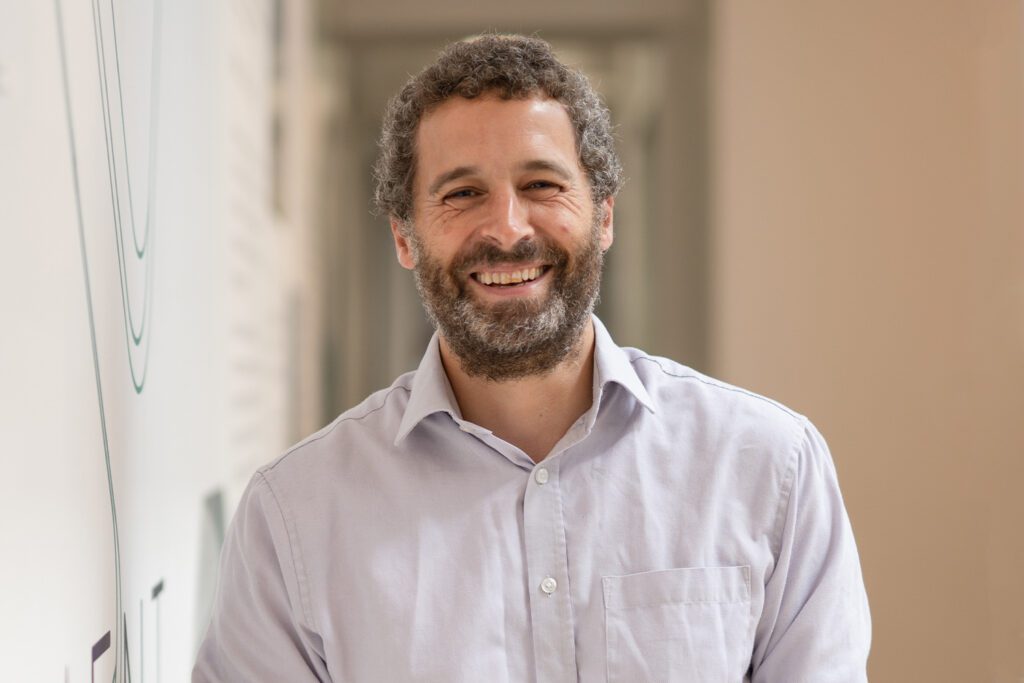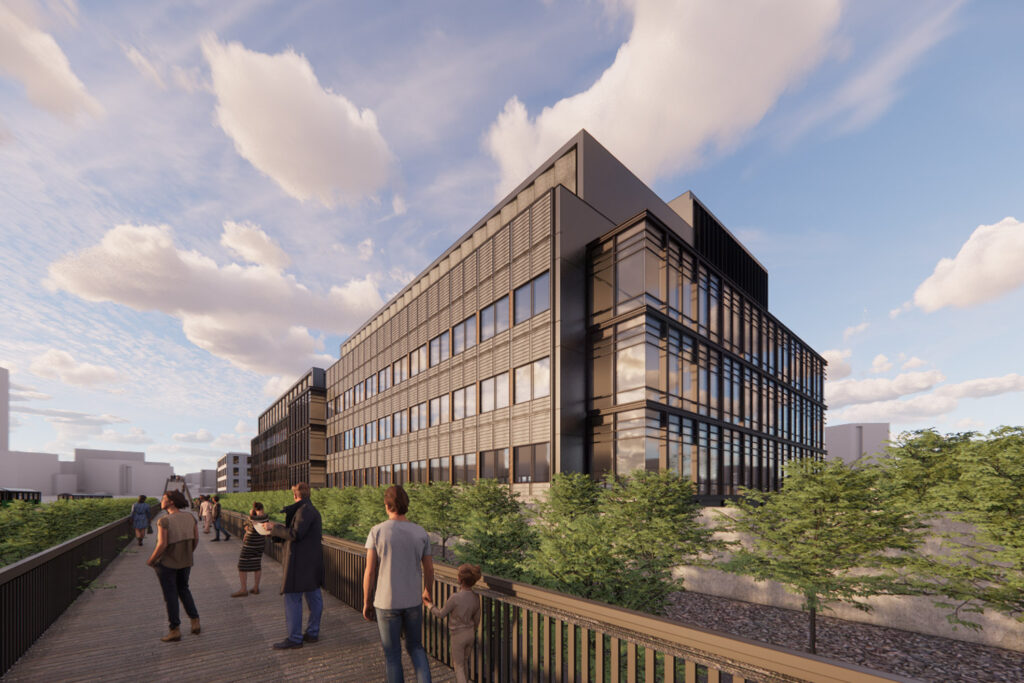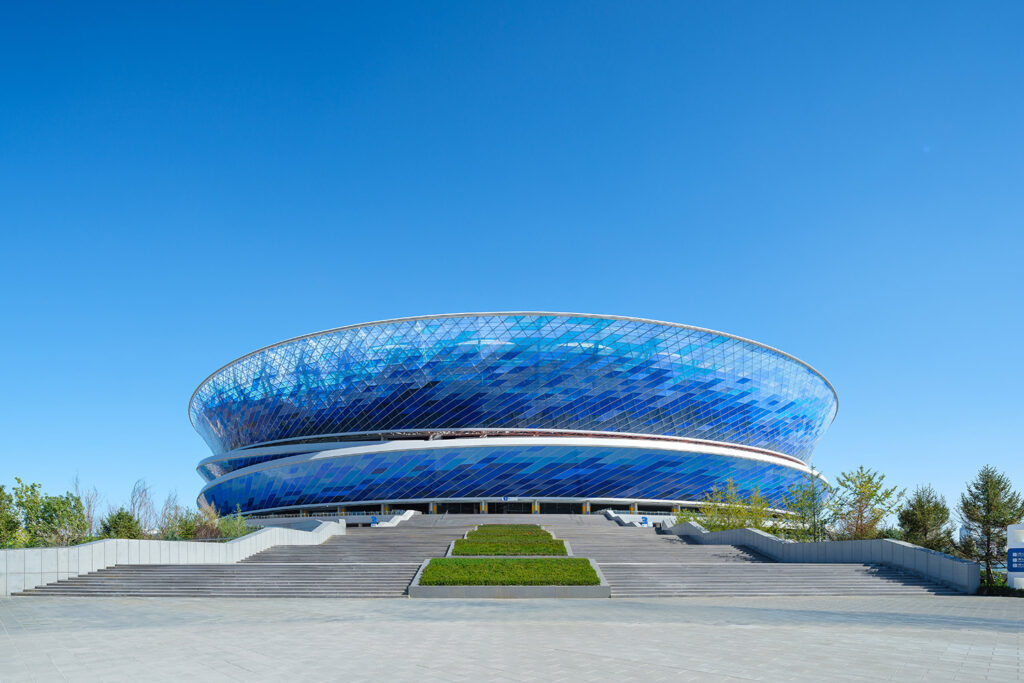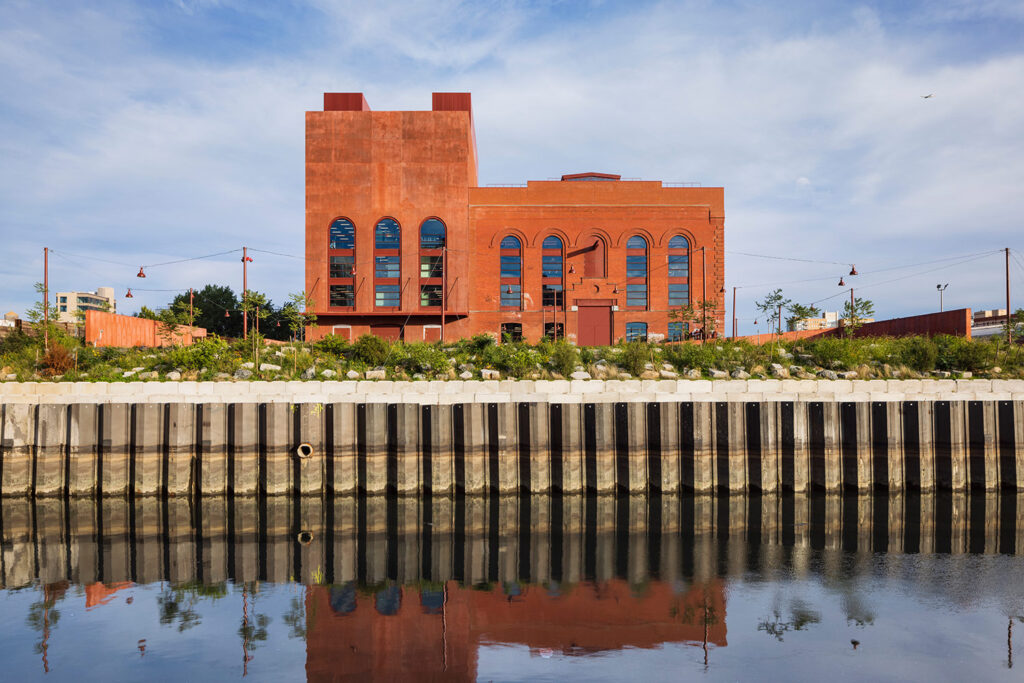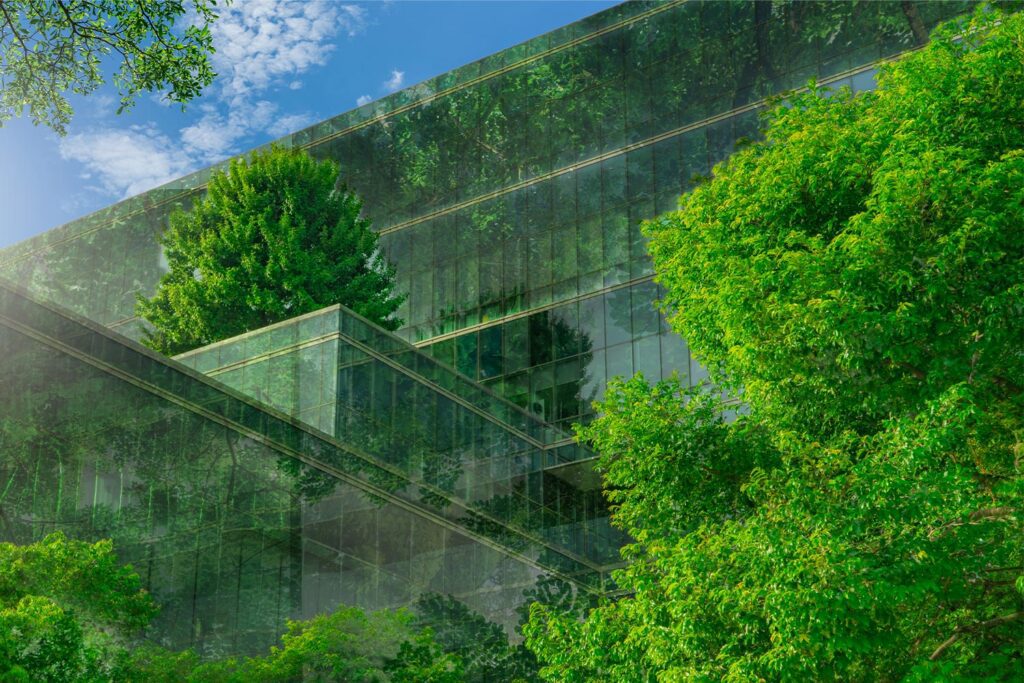
Shaping a sustainability strategy for a multi-billion-pound portfolio
Royal London Asset Management ESG and Sustainability Strategy
UK
Project details
Client
Royal London Asset Management (RLAM)
Duration
2020 – 2023
Services provided by Buro Happold
Advisory, Environmental, Social and Governance Consulting, Smart places, digital and data advisory, Sustainability
Royal London Asset Management (RLAM) is part of the UK’s largest mutually owned pension and investment company with over £150bn of assets under management.
The business has committed to achieving Net Zero by 2030 for directly managed assets and development and 2040 for indirectly managed assets and has set itself the goal of developing solutions that enable clients and customers to invest in the low carbon transition.
In 2021, we started reviewing our standards against minor project refurbishments to ensure sustainability was being translated, where practical, into all aspects of refurbishment. Buro Happold helped us to establish and continue to develop a route to ensure inclusion and embedding of standards.”
Joseph Kane, RLAM
Challenge
Buro Happold has been working with Royal London Asset Management as a strategic consultant to develop a robust sustainability framework and strategy to implement within its new build and refurbishment real estate development funds.
The overarching aim for RLAM was to create thriving buildings and places which have enduring appeal for occupiers and add value to local communities. As a signatory of the Net Zero Asset Managers Initiative, which is part of the United Nations-backed Race to Zero campaign, RLAM also aim to achieve Net Zero Carbon prior to the Paris Climate Agreement 2050 deadline.
RLAM’s aspiration is for its funds to be leading in sustainability performance and to help reduce the effect of climate change. This process has led to the creation of a new set of standards which are considered aspirational and market leading.
This is part of a three-year commission that will continually review and inform RLAM about changes in the industry and changes that should be made to its developments regarding sustainability.
RLAM wanted to minimise the impact that their properties have on the environment and so we aligned our work to their Responsible Property Investment strategy 2021-2025 (RPI), and developed a sustainability strategy and a sustainability framework designed in alignment with their other work streams.
In 2021, RLAM updated its approach to Responsible Property Investment (RPI) in relation to the funding and delivery of development and refurbishment projects.
A key challenge would be to review and update sustainability targets that are embedded within the development and refurbishment activities that RLAM commissions, and those that RLAM fund externally, including through joint venture arrangements.
Another imperative for RLAM was embedding ESG priorities to balance how the organisation can manage and mitigate risks and create value that will lead to best practice. To achieve this, ESG must be considered throughout the buildings’ design, construction, and long-term operation. In addition, design teams need to consider a whole life cycle approach: designing for performance meant finding the balance between embodied and operational carbon to ensure building systems and fabric performance are more efficient and sustainable. This ensures carbon emissions are considered at all stages, and that design decisions are balanced.
Similarly, when designing the building services, if passive strategies have not been achieved, often the operational efficiency of the system will take priority over the embodied carbon of the system.
Collaboration and problem sharing became vital, to help inform RLAM’s priorities and to ensure that early stage option studies and analysis took place in conjunction with the development of architectural and aesthetic proposals. From here we could clearly identify how the operational and embodied carbon can be best optimised in support of RLAM’s ESG goals and net zero strategy.
Climate change is the biggest challenge facing our society today. As a responsible investor, RLAM’s ambition is to work with our clients to be a catalyst for a Paris-aligned economy. This permeates every aspect of our operations – from our Net Zero commitments to the way we manage properties in our portfolios and how we engage with the companies we invest in.
Hans Georgeson, CEO, Royal London Asset Management

It is exciting to see and be involved in helping Royal London’s Sustainability and Net Zero aspirations for development grow and be implemented within their projects. The development management team are actively encouraging delivery of their aspirational targets and have put processes in place to ensure that non-compliances are challenged.
Philippa Garnett, Associate Director of Sustainability, Buro Happold
Solution
This was a “top down, bottom up” approach – supporting RLAM with visioning, goals and key performance indicators, as well as ESG action plans, guidelines and best practices. From here we defined specific actions to support the achievement of Net Zero, to build climate resilience, and to champion sustainable growth. This ensures RLAM continues to create environments and communities that demonstrate their ESG commitment and start to deliver social value.
A Sustainability Strategy and Framework was created by Buro Happold and became an integral part of RLAM’s ESG property development strategy, supported by a wider suite of policies, documents and guidance notes to achieve it. Project documents were established and updated to support design teams and help them to understand the roles they were being asked to fulfil, with guidance on how to track their performance.
As part of the project, we are devising solutions to track and review developments in a visual way and to ensure a robust reporting system is put in place to challenge and drive continual improvements in the organisation’s developments.
Our sustainability consultants created a digital dashboard tool that allows the client to review all sustainability-related data for each live project asset in its investment portfolio, enabling swift and easy comparisons and assessments to be made.
Our role includes developing an exemplar sustainability framework applied to all relevant projects, coupled with the provision of ongoing advice and subject matter expertise to ensure RLAM keeps pace with relevant best practice and innovation within the market.
The sustainability framework includes new “Property Development Sustainability Standards” developed collaboratively by Buro Happold and RLAM. The new standards set market leading requirements across nine themes: Energy & Carbon Emissions, Climate Resilience & Adaptation, Social Value, Materials & Supply Chain, Biodiversity & Green Infrastructure, Health, Safety & Wellbeing, Waste, Water and Building Certifications.
To help embed the standards, a number of supporting briefs have been prepared such as a new RLAM “Sustainable Procurement Guide”, “Circular Economy Brief”, “Whole Life Carbon Brief” and “Approach to Net Zero” strategy document. A “lessons learned tracker” has also been prepared to capture learning at each stage of the development and refurbishment property cycle, supported by regular project reviews.
Guidelines, actions and procedures are being developed to help design teams understand and implement the standards. We are also reviewing developments in construction to showcase best practice and report sustainability performance through industry-recognised benchmarking schemes.
Collectively the framework actively works towards achieving the United Nation’s Sustainable Development Goals relevant to the built environment, and drives RLAM’s strategic portfolio towards vital ESG accreditations including BREEAM, WELL and GRESB.
Buro Happold covered the breadth and depth of a lot of sustainability criteria along with KPIs, ensuring that it wasn’t solely carbon-based metrics being measured, but also looking at other sustainability aspects like ecology, circular economy, materials, and water consumption.
We not only needed to identify the ESG value and requirements, but to assess what that looked like developed over time. It was also vital that we maintained consistency and could clearly communicate the requirements across sustainable building standards and scope of work documents.
Bianca Laura Latini, Senior Sustainability Engineer, Buro Happold
We undertook an ESG gap analysis, based on RLAM’s current governance structures and how they work. We also ran a competitor review, looking at best practice industry standards and then we explored sustainability themes with RLAM, making sure that they were happy with what they were committing to as an iterative process.
The first part of the project included a review of existing relevant commitments, as well as a wider review of global trends. This process included a detailed review of peers and included recognising a range of sustainability frameworks with an additional review of what good practice industry standard frameworks looked like.
We helped RLAM analyse and set ESG targets aligned to what matters most within the industry context, now reflected in the sustainability framework and other best practice accreditations and the Development Sustainability Standards.
This ensured the organisation could assess the number of slow building, big picture, trends and the core issues across ESG, from climate change to tackling the biodiversity emergency. This thorough assessment included a benchmarking exercise, comparing performance against sustainability in the context of industry peers. From this process, we were able to create a new set of aspirational and market leading targets for RLAM. The key focus areas included: Circular Economy; Net Zero Carbon; Biodiversity; Social Value.
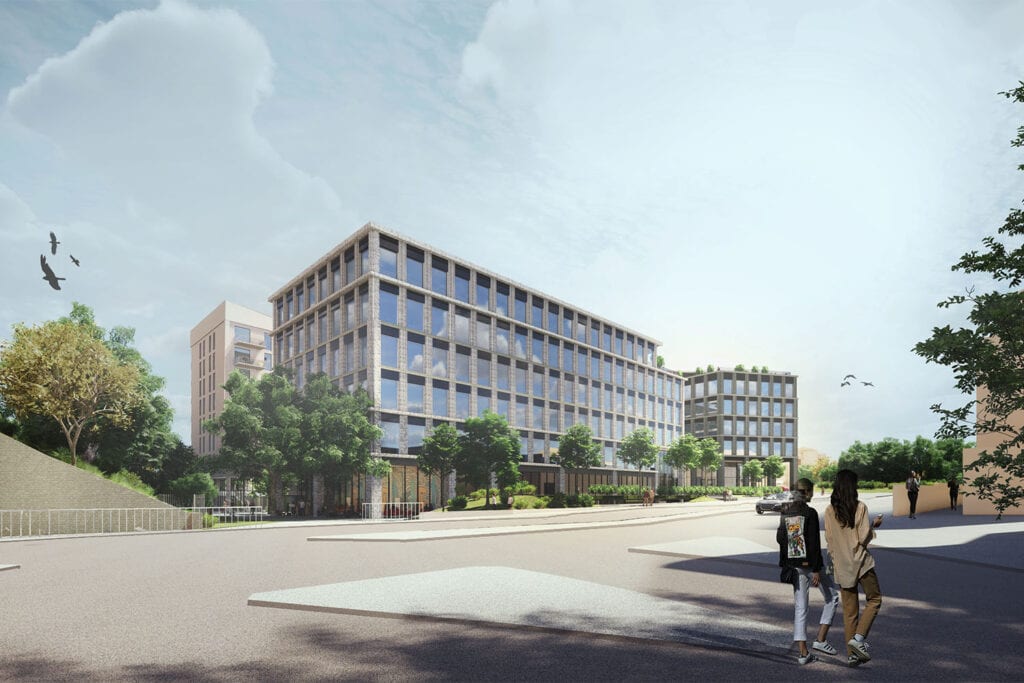
Buro Happold has been leading the substantial improvement of Royal London’s development sustainability capability and have added significant value to our business in this area. Its strategic approach to the production of the new framework has delivered a real step change in Royal London’s ability to embed, challenge, track and report sustainability within our developments and refurbishments to the benefit of both investors and occupiers.
Matthew Bird, Development Manager, Royal London Asset Management
Value
We continue to keep reviewing the progress with quarterly reviews. On an annual basis, we review the standards themselves, so we can ensure RLAM is aligned with industry best practice.
As part of our wider strategic consultancy role, we have been leading on RLAM’s development property GRESB Real Estate Assessment submissions for the Royal London UK Real Estate Fund (RLUKREF) and Royal London Property Pension Fund (RLPPF). Scores have increased year-on-year, demonstrating RLAM’s commitment to embedding and reporting sustainability credentials.
For RLAM’s existing development and refurbishment projects we have undertaken strategic reviews compared to the new design standards. Outcomes have included projects undergoing additional Design for Performance (DfP) analysis, providing alignment to net zero carbon principles. We have also undertaken independent peer reviews and benchmarking of sustainability credentials against competitors.
In terms of wider advisory services, we supported RLAM on its journey towards becoming a NABERS UK ‘Design for Performance’ (DfP) pioneer through our work on the Statesman House development in Maidenhead. We also undertook a UKGBC compliant whole life carbon study for the Glassfields development in Bristol, designed AWW architects working in collaboration with Buro Happold.
For the Distillery office building on this site, embodied carbon in construction was calculated as 469 kgCO2/m² well below the London Energy Transformation Initiative (LETI) 2020 target of 600 kgCO2/m².







